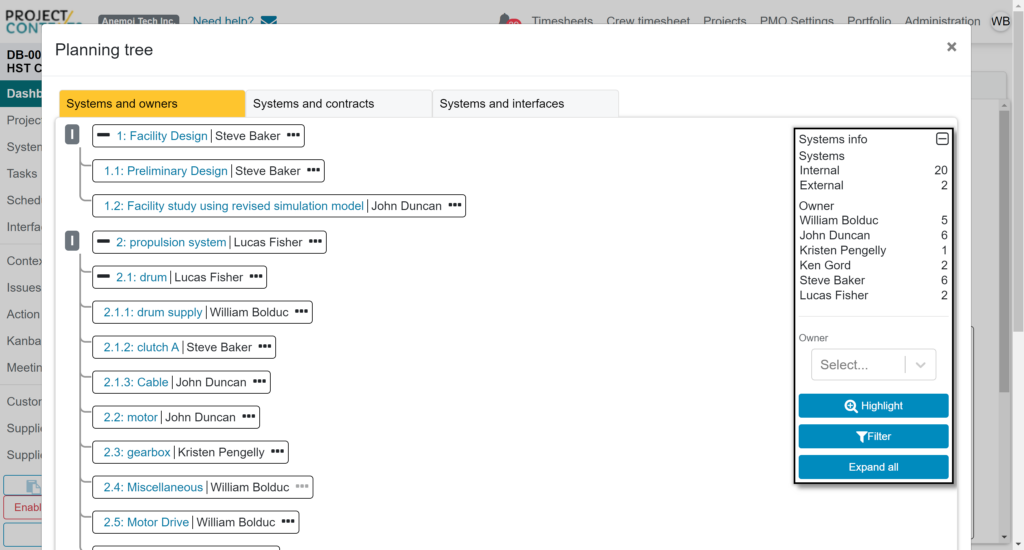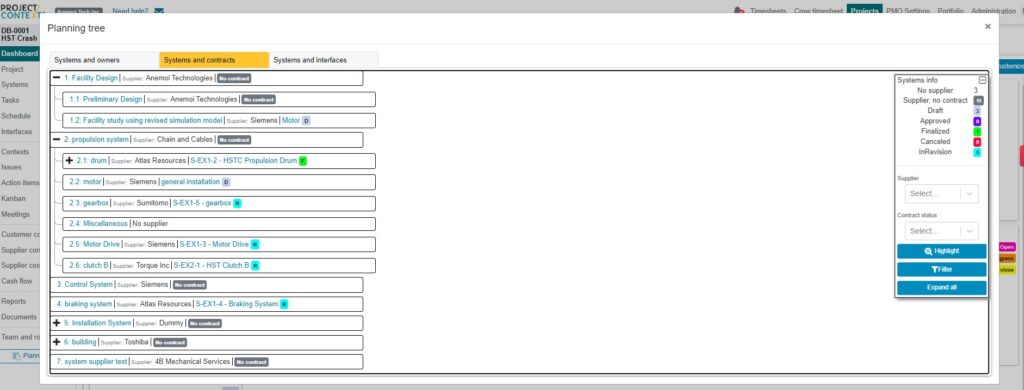
Intuitive Project Management: Avoid the Schedule-Centric Approach for Better Results
Project management software has become essential for organizations striving to stay competitive. However, many of these tools are often more focused on workflow management rather than true project management. This distinction is crucial for project managers seeking to enhance efficiency and accuracy. ProjectContexts, is an intuitive platform designed to bridge this gap and revolutionize the way projects are managed.
Assume you are handed a project to build a house from existing architectural drawings.
Like a real estate’s virtual walk-through, you visualize the outside, first floor: the living room with the patio door to the garden, the kitchen with some appliances, maybe the ventilation ducting, water and sewage system, etc. Then walk up the staircase to the second floor, etc.
Certainly, you do not visualize “tasks”, at least not at this stage. So why would you want to call them “summary tasks”? you can then also “indent” tasks or “outdent” to summarize tasks? ( To eliminate confusion we call them “system”, sub-systems, etc.)
Maybe you might associate some properties to those systems, like a two-door, extra-wide refrigerator?
Maybe now you visualize the tasks necessary to create each of those systems, such as how long it will take with how many people, how we sequence the tasks within that system, etc.
The point is, at this time we are ready to use a schedule interface for that system: when we know what to put on the schedule.
Instead of starting a project with an empty schedule with only a vague idea of what you have to put on the schedule, without a clear vision of which tasks should be tasks, summary tasks, outdented summary tasks, and so on.


1. Planning Project Elements: Beyond Schedules
Contemporary project management software often fixates on schedules, creating an unnecessary hurdle for project managers. The most common scenario happens where these tools start with an empty schedule which diverts attention from crucial project elements. At ProjectContexts, we challenge this norm.
Imagine a different approach: ProjectContexts advocates a top-down process, urging project managers to prioritize the project charter, objectives, deliverables, and scope initially. A software platform should be able to provide a project setup that intuitively aligns with your project’s vision.
2. Intuitive Project Set-up: Relationships Beyond Schedules
ProjectContexts addresses the difficulty of delineating project components without a predetermined schedule. Our approach introduces a user-friendly concept where all elements can be viewed and modified seamlessly, whether within or outside the schedule. This flexibility allows users to initiate projects with an empty schedule if desired. The relationships between tasks are simply task properties, utilizing a schedule for graphic definition convenience while remaining editable without the limitations of a rigid schedule.
3. Summary Tasks and Systems: Enhancing Clarity and Precision
In ProjectContexts, a “task” is precisely that – a unit of work. However, a “summary task” is reimagined as a “system,” representing a collection of tasks, deliverables, or phases. Unlike traditional project management software, easily up/downgrading tasks to/from summary tasks are replaced by a more accurate and error-resistant system in ProjectContexts.
More Than Just A Schedule
Ultimately the schedule looks similar to other PM software schedules with graphical relationship input but also includes a Schedule Resource Panel for tracking accuracy.
Workspace ON-Schedule vs OFF Schedule
Managing ON-Schedule and OFF-Schedule elements in traditional project management has been an ongoing challenge with today’s contemporary project management platforms. The main issues reflected are scattered project components across different platforms which can cause for lost work and unnecessary time consumption. ProjectContexts eliminates the ON-OFF schedule differentiation, providing a unified space for all project-related elements. You can read more about this in our latest blog post here.
Key features include the use of Contexts to replace to-do lists, the association of issues and action items with systems, the integration of systems into supplier contracts, the intelligent linking of contract milestones with project milestones, and the incorporation of meetings and minutes within the platform.
Addressable Systems
Systems can be addressed inside a schedule for example to filter a schedule. (Instead of selectively hiding / unhiding summary tasks)
Systems, Tasks and Milestones can be addressed outside a schedule, for example for interfacing with supplier contracts, terms of payments, supplier tendering, progress reports, etc. All of these features can be monitored and even edited through our Planning Tree feature as seen in the screenshots below:


Summary
In conclusion, to say the benefits are significant is an understatement. The process becomes much more intuitive, eliminating the hassles of in and out-denting. Systems and tasks are addressable and defined independently of a schedule, allowing full access to team members without needing schedule permissions. Elements traditionally considered off-schedule, such as to-do lists, contexts, and contracts, can be associated with systems and schedule milestones. Additionally, unlike most schedule-centric platforms, there is a clear overview of system owners and contracts. “Lessons Learned” can also be associated with systems, further enhancing the process.
Unlock the Future of Project Management with ProjectContexts
Ready to experience a new era of project management? Sign up for our free trial and explore the intuitive, efficient, and error-resistant world of ProjectContexts.
Join us in revolutionizing how projects are managed – where the focus is on the scope of your project, not just the schedule. Reach out to speak to a ProjextContexts expert today!